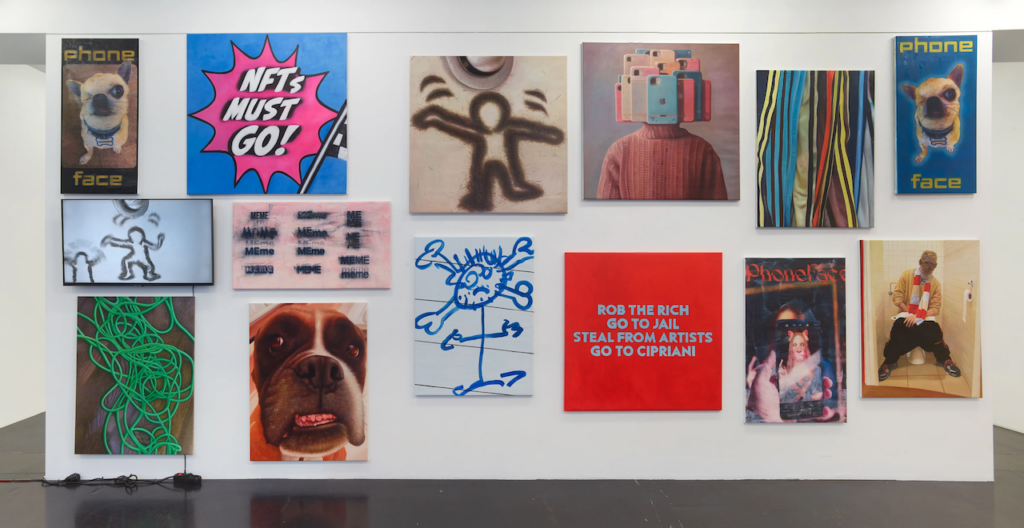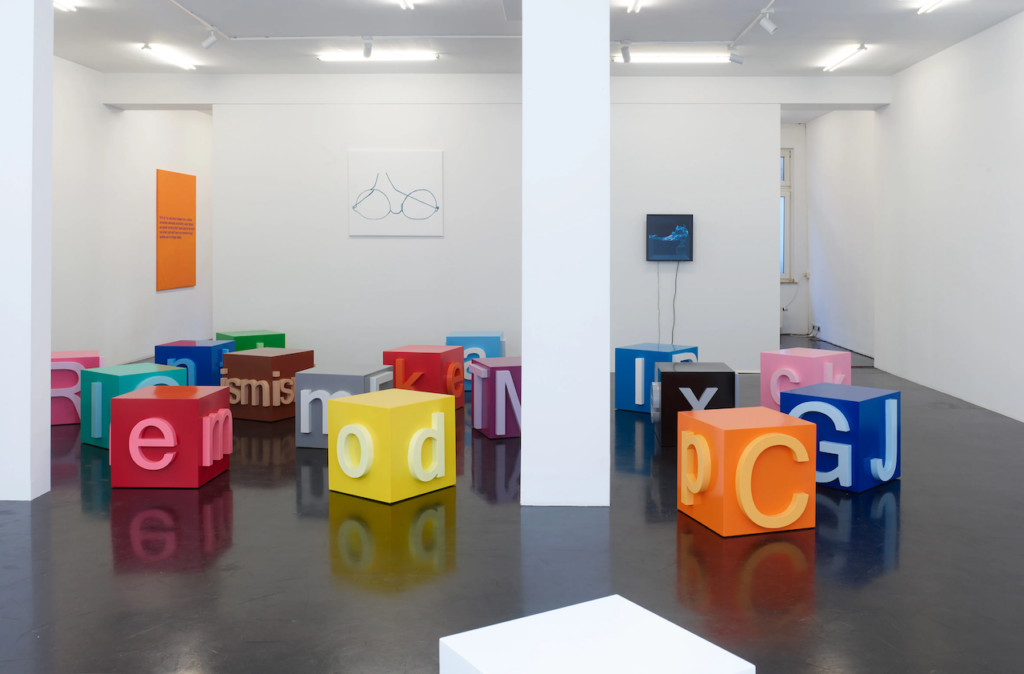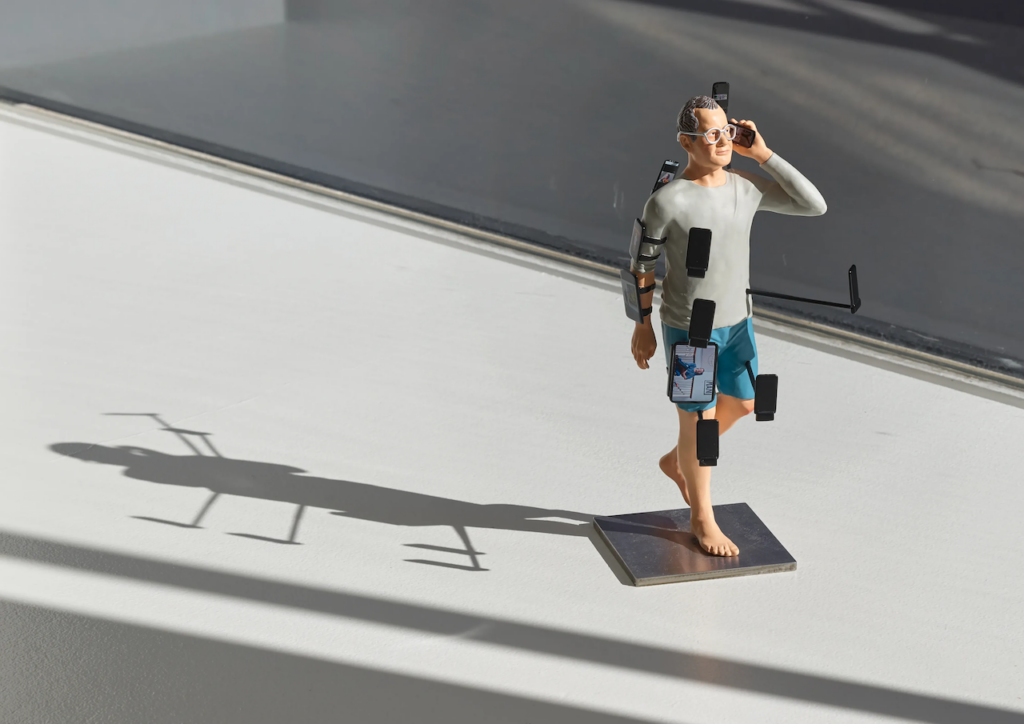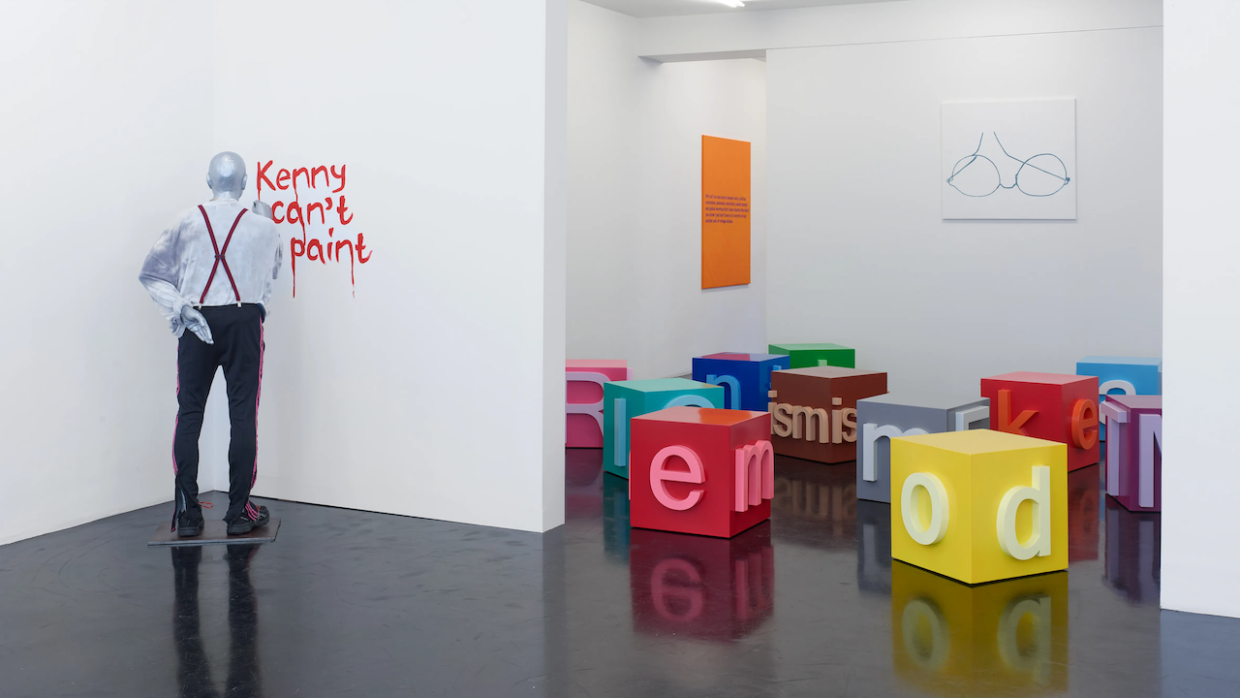Kenny Schachter returns to Galerie Nagel Draxler in Cologne with his second solo exhibition, Phone Face, running from August 31 to October 25, 2024. Known for his critical engagement with contemporary culture, Schachter uses this exhibit to explore the ways in which digital technology has redefined human expression and the art world.
The exhibition title draws from the term “photo face,” the standard pose many adopt for photographs. Schachter extends this idea to the digital era with Phone Face, reflecting the emotionless expressions people display while absorbed by their smartphones. It is a “mask of detachment” that symbolizes our immersion in the digital world, where blank stares and furrowed brows are visual echoes of the modern fixation with screens. Schachter portrays this through a series of physical and digital works that critique the impact of prolonged screen exposure on our bodies and souls.
His exploration of “phone face” goes beyond superficial observations, offering a meditation on how digital media shapes our physical presence. The result is a body of work that, while playful, points to the underlying implications of screen addiction in the 21st century.

Image: Simon Vogel
At the core of Phone Face are 22 cube-shaped sculptures made of cast aluminum, each inspired by words from today’s tech and social media landscape. These works are arranged randomly, evoking the chaotic nature of the digital age and its language. The sculptures feel like artifacts of our present, a visual index of the vocabulary we use to navigate the online world.
Schachter’s use of words like “Like,” “JPEG,” and “Data” highlights how technology and social media have reshaped communication. The cubes serve as a playful commentary on how tech terms have permeated our daily conversations, making us reflect on how fleeting yet significant these concepts are in the digital age.
Schachter blurs the boundaries between the physical and digital in his work, a theme consistent throughout the exhibition. His Phone Face paintings, for instance, are created pixel-by-pixel, sometimes with the help of robotic arms, translating digital imagery into physical canvases. The result is a fusion of traditional art techniques with digital processes, reflecting the dual nature of our lives in both the virtual and real worlds.

Photo: Simon Vogel
A striking example is his piece Kenny Can’t Paint, a life-sized sculpture that critiques both himself and the art world’s obsession with conceptual art over craftsmanship. The sculpture, dressed in Adidas tracksuits, responds to critics of his non-traditional art methods, adding a layer of irony to his broader commentary on art production in the digital age.
In conjunction with the exhibition, Schachter continues his exploration of NFTs (non-fungible tokens) through a partnership with MakersPlace, a prominent digital art marketplace. As digital assets gain prominence in the art world, Schachter capitalizes on the convergence of physical and digital spaces by making his works available both in the gallery and as NFTs. This dual approach allows his art to exist in two realms, further underscoring the transformative role technology plays in contemporary art.
Schachter’s collaboration with MakersPlace also aligns with his ongoing interest in blockchain, Web3, and the metaverse, all of which have become integral to his work. In this way, Phone Face not only critiques digital culture but also fully participates in it, offering collectors a chance to own both physical and digital versions of his creations.

Photo: Simon Vogel
Phone Face invites viewers to consider the broader implications of their relationship with technology. Schachter deftly addresses how social media, mobile devices, and digital tools have blurred the lines between personal identity and public persona. As he notes, “social, political, economic, and geographic boundaries have been blurred while shifting hegemonies and prophylactic limitations have been imposed by the new order of things.”
This reflection on how technology has altered our reality serves as a key theme in Phone Face. The work prompts us to reconsider how we present ourselves in digital spaces and how this new form of expression reflects, and distorts, our true selves.



